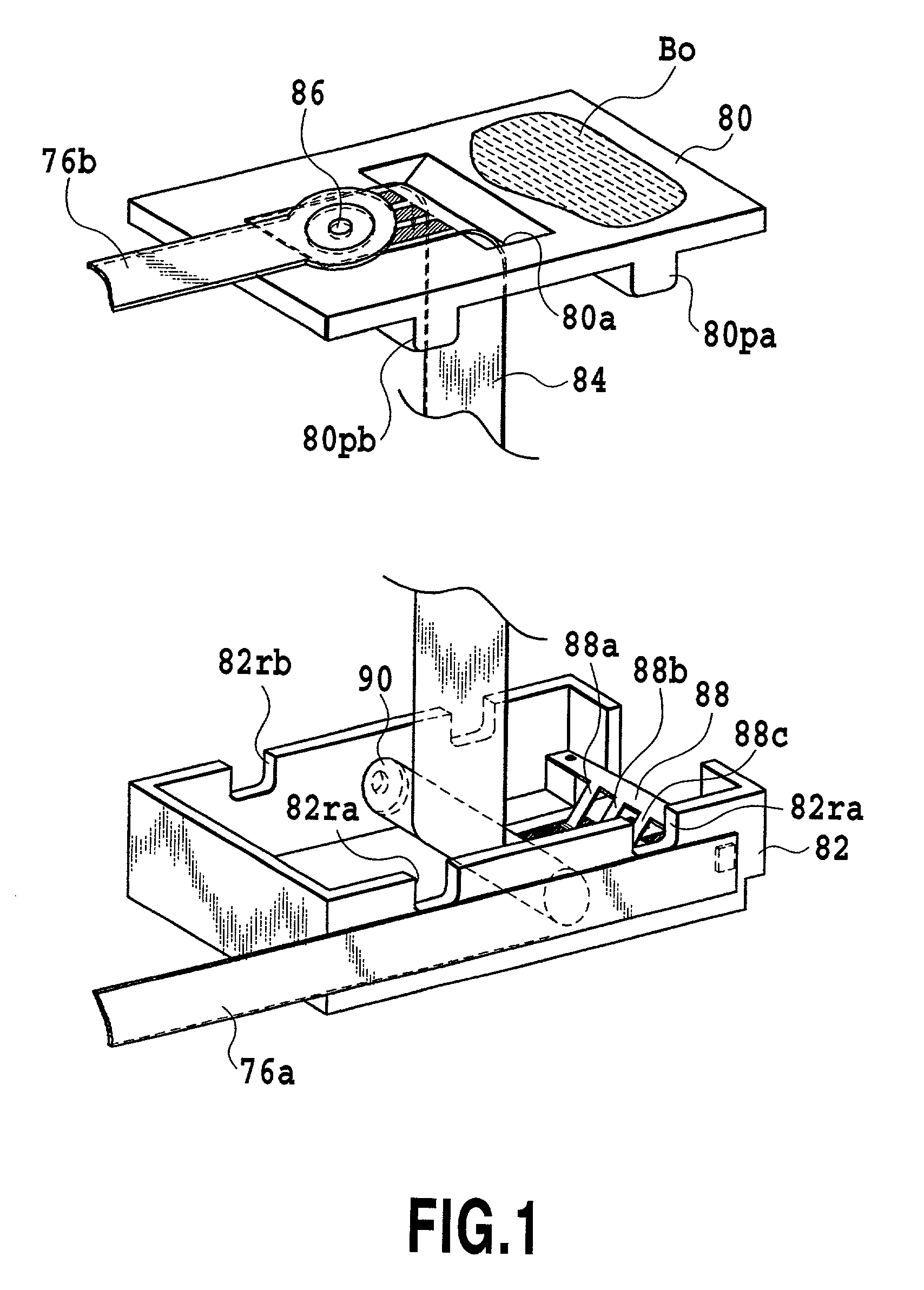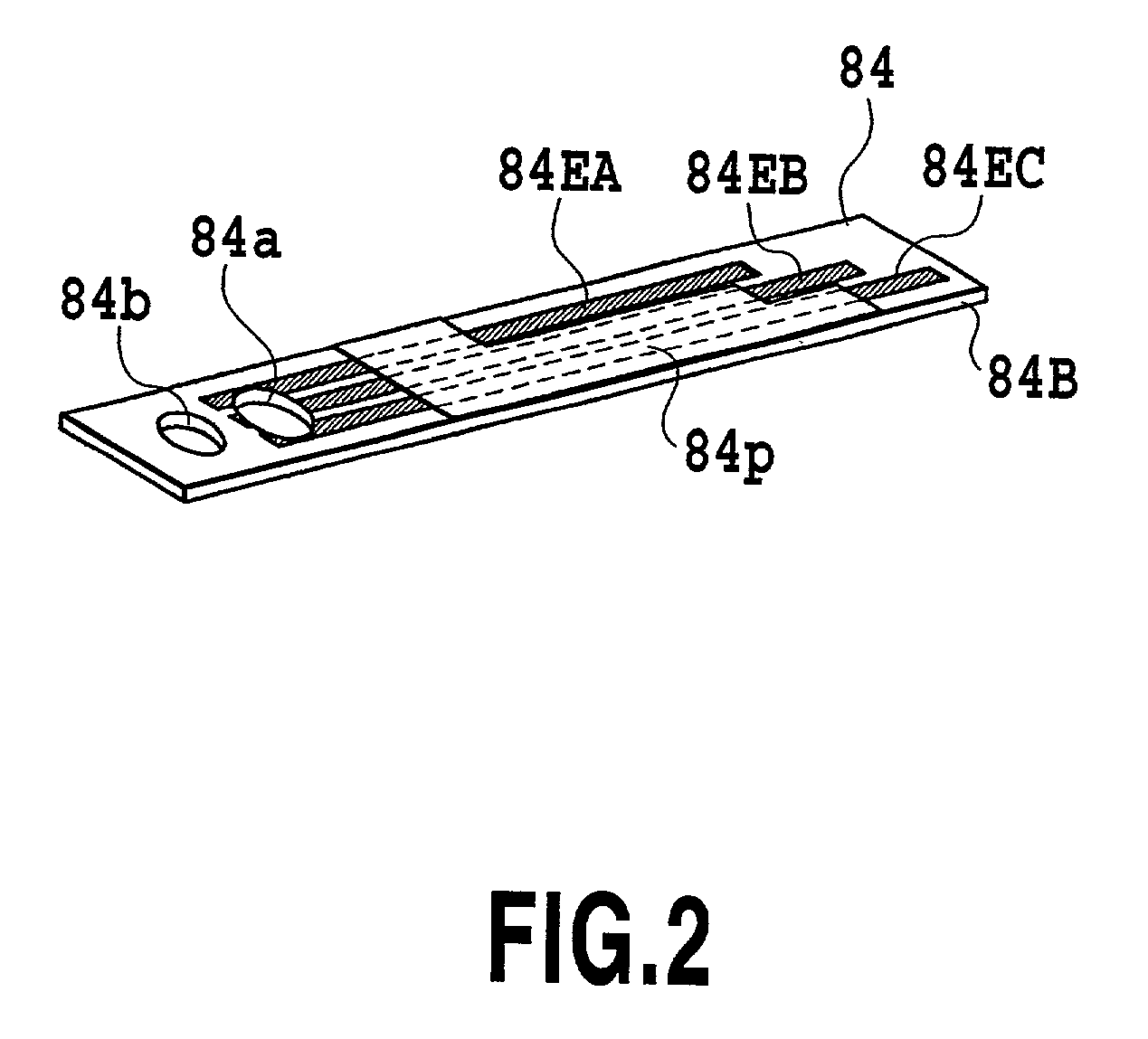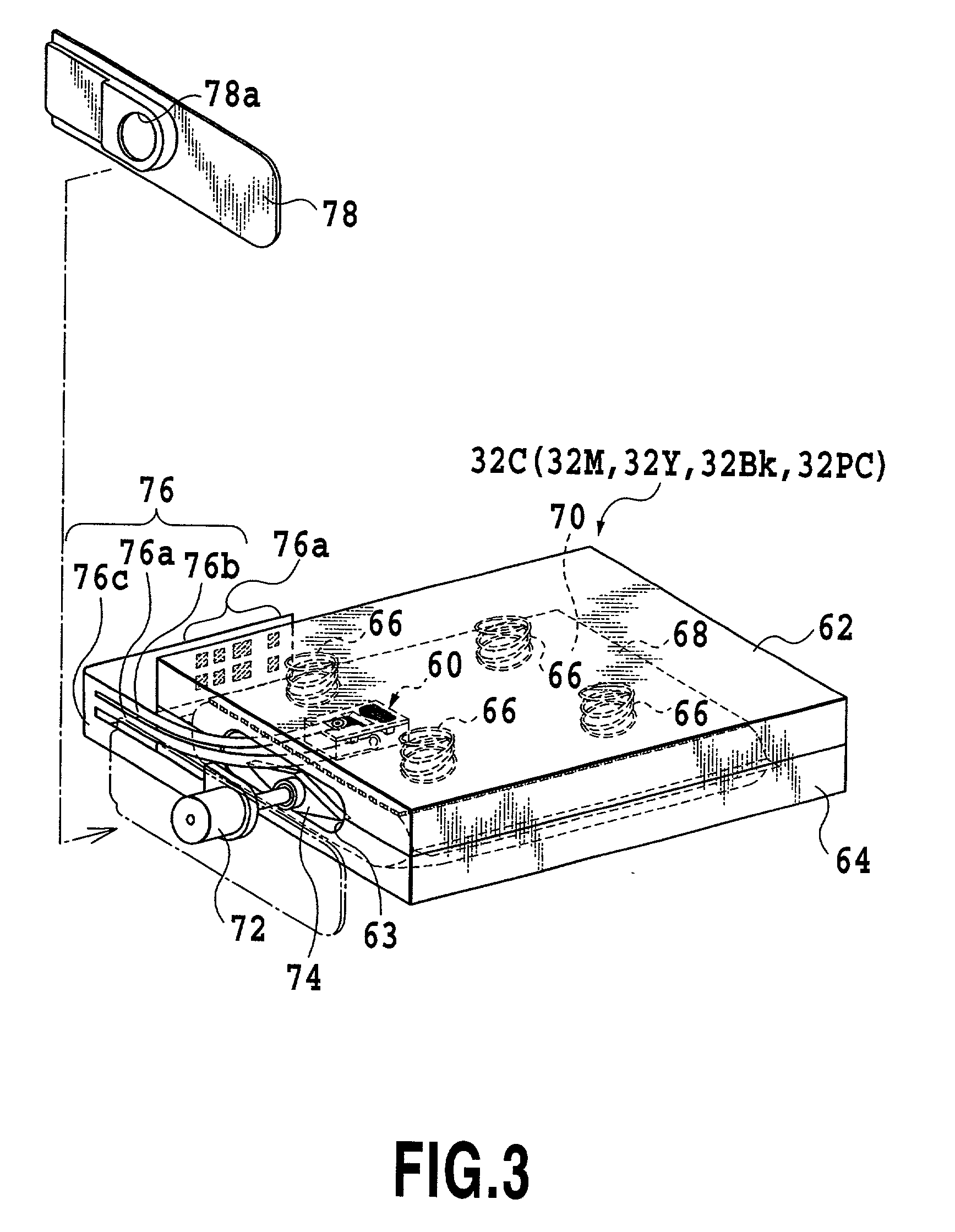Print liquid tank and printing apparatus having the same
a technology of printing apparatus and liquid tank, which is applied in the direction of printing and other printing apparatus, etc., can solve the problems of increasing the steps of assembly process, not being practical, and only being able to indicate the remaining amount of ink, etc., and not being able to feed back to the printer body
- Summary
- Abstract
- Description
- Claims
- Application Information
AI Technical Summary
Problems solved by technology
Method used
Image
Examples
Embodiment Construction
[0062] FIG. 6 schematically shows an example of the printing apparatus having the print liquid tank according to this invention.
[0063] The example shown in FIG. 6 is, for example, an ink jet printer having a print head unit 38 that prints on a recording surface of a sheet Pa as a printing medium.
[0064] The ink jet printer IJ has as main constitutional elements a carriage member 28 reciprocally moved and carrying the print head unit 38, ink tanks 32C-32PC for supplying inks of predetermined colors or a process liquid to print heads 38HC-38HP of the print head unit 38 detailed later, and a paper feed roller unit 26 for feeding the paper Pa to a predetermined position below the print head unit 38.
[0065] The carriage member 28 is slidably supported on guide shafts 22 and 24 disposed parallel to and facing each other. The guide shafts 22 and 24 extending virtually perpendicular to the direction of arrow F or paper Pa feed direction described later are supported at their ends by side wall...
PUM
 Login to View More
Login to View More Abstract
Description
Claims
Application Information
 Login to View More
Login to View More - R&D
- Intellectual Property
- Life Sciences
- Materials
- Tech Scout
- Unparalleled Data Quality
- Higher Quality Content
- 60% Fewer Hallucinations
Browse by: Latest US Patents, China's latest patents, Technical Efficacy Thesaurus, Application Domain, Technology Topic, Popular Technical Reports.
© 2025 PatSnap. All rights reserved.Legal|Privacy policy|Modern Slavery Act Transparency Statement|Sitemap|About US| Contact US: help@patsnap.com



